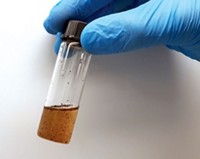Advertisement
Grab your lab coat. Let's get started
Welcome!
Welcome!
Create an account below to get 6 C&EN articles per month, receive newsletters and more - all free.
It seems this is your first time logging in online. Please enter the following information to continue.
As an ACS member you automatically get access to this site. All we need is few more details to create your reading experience.
Not you? Sign in with a different account.
Not you? Sign in with a different account.
ERROR 1
ERROR 1
ERROR 2
ERROR 2
ERROR 2
ERROR 2
ERROR 2
Password and Confirm password must match.
If you have an ACS member number, please enter it here so we can link this account to your membership. (optional)
ERROR 2
ACS values your privacy. By submitting your information, you are gaining access to C&EN and subscribing to our weekly newsletter. We use the information you provide to make your reading experience better, and we will never sell your data to third party members.
Energy
Fuel‑Cell Catalysts Tolerate CO
Nanoparticulate platinum catalyst that resists carbon monoxide poisoning could lead to longer-lasting fuel cells.
by Mitch Jacoby
July 26, 2010
| A version of this story appeared in
Volume 88, Issue 30

A novel nanoparticulate platinum catalyst outperforms commercial platinum catalysts in terms of stability, oxidation activity, and resistance to carbon monoxide poisoning, according to chemists at Cornell University (J. Am. Chem. Soc., DOI: 10.1021/ja102931d). The study could lead to longer lasting and better performing catalysts for proton-exchange-membrane fuel cells, which in turn could hasten widespread deployment of these electrochemical power generators in transportation and portable electronics applications. Carbon-supported platinum’s exceptional knack for catalyzing hydrogen oxidation is quickly curtailed by low parts-per-million levels of CO, which poison the catalyst surface. The leading solution to the problem calls for formulating Pt/C catalysts with ruthenium—but even those catalysts are not durable enough for large-scale commercialization. Deli Wang, Chinmayee V. Subban, Héctor D. Abruña, and coworkers have shown that depositing low levels of platinum on tungsten-substituted titania (Ti0.7W0.3O2) yields a highly active hydrogen-oxidation catalyst that resists CO poisoning better than commercial Pt/C and PtRu/C catalysts. The enhanced resistance is due to titania’s and tungsten’s facility for oxidizing CO, the team explains.



Join the conversation
Contact the reporter
Submit a Letter to the Editor for publication
Engage with us on Twitter